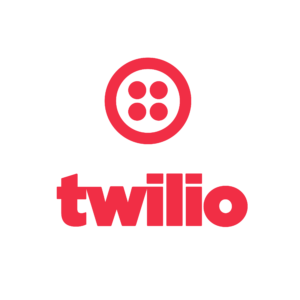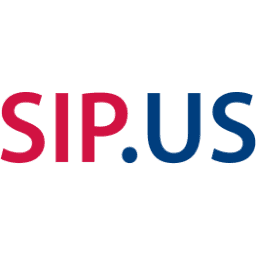

Top SIP Trunking Providers of 2021 | ENP
As workforces become more distributed, their communication stability requirements have only heightened. SIP trunking, a voice-over-IP (VoIP) communication solution for calling via internet connection, is one solution that many companies are turning to, ensuring that a global workforce and customers alike have reliable access to company communications. Read on to learn how SIP trunking works, […]


As workforces become more distributed, their communication stability requirements have only heightened. SIP trunking, a voice-over-IP (VoIP) communication solution for calling via internet connection, is one solution that many companies are turning to, ensuring that a global workforce and customers alike have reliable access to company communications.
Read on to learn how SIP trunking works, some of its most key benefits for organizations, and the top SIP trunking options available on the market.
Also Read: Four Trends Driving VoIP Development
The “SIP” in SIP trunking stands for “session initiation protocol,” a signaling protocol on the internet that makes it possible for internet telephony service providers (ITSPs) to connect calls via internet connection. In this model of communication, IP-enabled private branch exchange (PBX) replaces legacy phone lines and hardware so that users can make calls via internet “softphones” or PBX-powered hardware.
So how exactly does SIP trunking make internet calling possible? In this model, a packet switch network breaks voice calls down into digital packets and sends them across the IP to selected phone numbers. These phone numbers can be associated with other internet phone users or traditional phone users. The only requirement for an SIP-powered connection is for both users to have a phone number.
SIP is only one type of VoIP communication available in the business technology market, but it is generally considered one of the simplest VoIP models to launch and maintain.
SIP vs. VoIP: What Is SIP Trunking? How is it Different from VoIP?
Most modern companies directly benefit from SIP trunking and the flexible communication opportunities that VoIP-powered communication offers. These are some of the enterprise users who especially benefit from transforming their communication infrastructure:
Also Read: What Is the Cost of Remote Work for Employees and Businesses?
SIP trunk providers offer a range of services that can be customized to fit a small business or a large global enterprise. Although most of these vendors focus on voice calling, several of them offer embedded solutions or integration opportunities for video conferencing and other categories of business communications. Here are eight of the top SIP trunk vendors that cater to customers with different management, compliance, and security requirements.

Twilio’s Elastic SIP Trunking solution is considered one of the most agile and global-friendly solutions on the market, with top-tier enterprises like Twitter among their customers. Twilio supports a wide variety of self-service features for their customers, making their platform an agile solution for customers that need to scale up or down, provision new trunks, or adjust cloud features on a quick timeline. This platform is a top solution for highly distributed workforces, especially with its support for 100+ countries, comprehensive security and fraud prevention features, a regional prefix inventory, and strong disaster recovery capabilities.
Features:
Top Pro: Twilio offers an effective customer support team known for responding to customer queries within 24 hours.
Top Con: Some coding knowledge required, and limited training documentation makes this a solution with a higher learning curve.

Nextiva is a top SIP solution with a focus on usability that has won over enterprise customers like Taco Bell, the YMCA, and Cisco. This vendor focuses heavily on simplified deployment and improved user experiences for its customers. Some of its defining features include guided support during porting and initial launch, consistent uptime and connectivity, redundant SIP servers for low-latency connectivity and multiple call routes, and standards-compliant credentials and other templates for easy setup.
Features:
Top Pro: Nextiva offers relatively simple setup, with standards-compliant credentials prewritten to be copied into the user’s PBX.
Top Con: Call quality, particularly audio, has been spotty for some users.

Vonage is another top provider of elastic SIP trunking that focuses heavily on customization and user management. Enterprise managers of their systems have the ability to manage user accounts, but also to query information on another user agent, including supported methods, content types, extensions, and codecs. Their solution also offers several integrations and customizable programming features, such as split and multitrack recording, TTS, and WebSocket connectivity.
Features:
Top Pro: Vonage offers several top security features and customizations, including TLS support and scalable user permissions.
Top Con: In most customer support use cases, customers can only reach the company via online chats.

Bandwidth is one of the most widely used providers on this list, with one of the world’s largest all-IP voice networks and a robust API platform that supports billions of voice minutes, text messages, and emergency calls annually. The company is projected for major growth in the next few years, hoping to reach 60+ countries globally. Much of their global expansion began with their acquisition of Voxbone in 2020, a global communication as a service company with hubs across North America, Europe, and APAC.
Features:
Top Pro: Bandwidth offers top-rated customer support, with a 98% CSAT score, 24/7 Technical Assistance Center, 24/7 monitoring by in-house Network Operations Center, and clear escalation paths.
Top Con: Some users have commented on their difficulties with number porting and edits, requiring them to do partial porting with limited information on the numbers.

SIP.us is a SIP trunking solution that focuses on working with your existing PBX tools and internet providers. One of their main draws for customers is their open source compatibility with tools like Asterisk, FreeSwitch, Elastix, PBX in a Flash, and several configuration GUIs. Regardless of what tools you want to incorporate in your SIP.us solution, the company offers what they call “cut-and-paste trunk configuration settings” to make service setup seamless.
Features:
Top Pro: SIP.us offers strong self-service features that eliminate some customer support needs. Command line editing is a favorite self-service feature.
Top Con: Some users have expressed that the UX/navigability of the platform makes it difficult to manage user devices over time.

8×8 is a SIP trunking provider that works to assist customers with cloud migration needs and distributed global customer support requirements. They have received high reviews for their services, particularly from IT leaders and specialists; they were voted as the #1 SIP Trunk provider in the 2020-2027 SIP Global Market 7-Year Forecast and Analysis report from Eastern Management Research Group, reviewed by 4,000+ IT experts. Although they offer global solutions, their pricing plan is flexible and offers both local and national options to customers.
Features:
Top Pro: 8×8 offers an extensive library of integrations, including for enterprise resource planning (ERP) and customer relationship management (CRM) software.
Top Con: Some users have noted that 8×8 runs application updates during peak business hours, causing calls to be dropped or missed.

Plivo’s Zentrunk Cloud-Based SIP Trunking solution has perhaps the furthest global reach in this market, with operational centers in six regions, covering five continents and over 190 countries. This global infrastructure is great for large global enterprises, but it’s also particularly strategic for companies that require reliable and constant uptime. With a redundant infrastructure across multiple geographies and at least three local carrier connections across countries, the company promises to offer its customers 99.99% uptime. They also excel in supporting global security, compliance, and privacy initiatives, such as GDPR.
Features:
Top Pro: Plivo offers strong data privacy and compliance features, such as high availability, 99.95% uptime SLA, and Privacy Shield and GDPR Compliance offerings.
Top Con: Some users find the subaccount interface particularly challenging to set up.

AlliancePhones is one of the smaller SIP Trunk providers on this list, but their monthly subscription plans offer a wide variety of features at a reasonable price. Their customers compliment their reliable uptimes, but especially highlight their customer service quality. As a smaller provider, AlliancePhones frequently offers live customer support via phone calls, chat, and other preferred forms of communication.
Features:
Top Pro: The customer support team is flexible with customer solutions and offers the expertise to solve customer problems quickly.
Top Con: Services are very basic, and limited to the United States and Canada.
Every SIP trunking vendor takes a slightly different approach and emphasizes different platform features. But if you’re looking for a SIP trunking solution, make sure that the following features meet your enterprise needs:
More on Compliance Management: Five Tips for Managing Compliance on Enterprise Networks
SIP trunking enables a wide variety of working environments and new communication opportunities when it’s implemented correctly. Here are a few of the top benefits realized by enterprises that use SIP trunking:
With SIP trunking, internet-powered communication makes it possible for users to access company communication from anywhere that they have internet access. Especially as workforces are increasingly moving remote and expanding into new global regions, SIP trunking makes it possible for employees to stay in the communication loop regardless of where they’re located.
SIP trunking relies on the internet rather than a local phone service, which is why SIP-based calling is considered more reliable; it depends primarily on internet connectivity, which is less likely to be affected by local problems or provider issues. Many users have also reported a higher audio quality and lower dropped call rate after switching to SIP trunks.
Although initial deployment and other setup needs can be tricky for some SIP trunk users, the long-term maintenance costs for this type of communication tend to be significantly less than in legacy phone setups. Many VoIP trunking models are set up to work with softphones, or internet-powered phone software, meaning that companies deal with less traditional phone hardware maintenance and costs over time.
Traditional phone services offer little more than voice and some messaging capabilities. But with SIP trunking and other kinds of VoIP communications, additional communication vectors are embedded or available via integration with other communication apps. SIP trunking is one of many modern business communication solutions that allows people to communicate in new ways, such as through video calls and teleconferences. With users now able to choose amongst a variety of internet-based communications, companies have more opportunities to communicate in the ways that best serve their distributed workforce and customers.
More on Unified Communications: Best Business VoIP Providers


Shelby Hiter is a writer with more than five years of experience in writing and editing, focusing on healthcare, technology, data, enterprise IT, and technology marketing. She currently writes for four different digital publications in the technology industry: Datamation, Enterprise Networking Planet, CIO Insight, and Webopedia. When she’s not writing, Shelby loves finding group trivia events with friends, cross stitching decorations for her home, reading too many novels, and turning her puppy into a social media influencer.

Enterprise Networking Planet aims to educate and assist IT administrators in building strong network infrastructures for their enterprise companies. Enterprise Networking Planet contributors write about relevant and useful topics on the cutting edge of enterprise networking based on years of personal experience in the field.
Property of TechnologyAdvice. © 2025 TechnologyAdvice. All Rights Reserved
Advertiser Disclosure: Some of the products that appear on this site are from companies from which TechnologyAdvice receives compensation. This compensation may impact how and where products appear on this site including, for example, the order in which they appear. TechnologyAdvice does not include all companies or all types of products available in the marketplace.